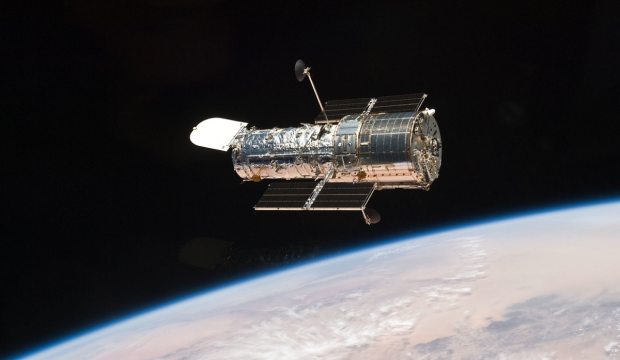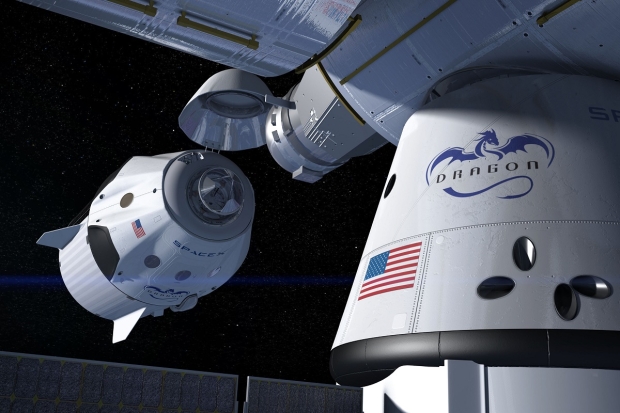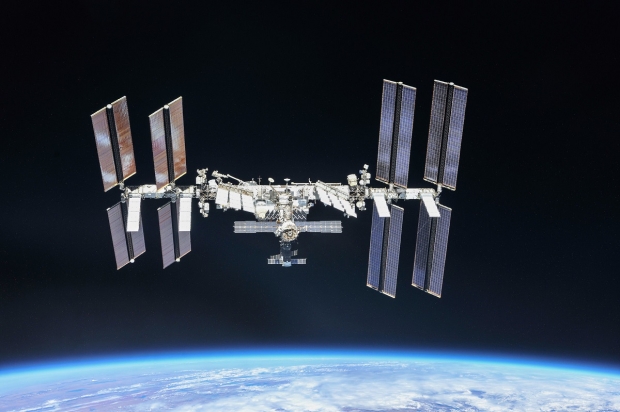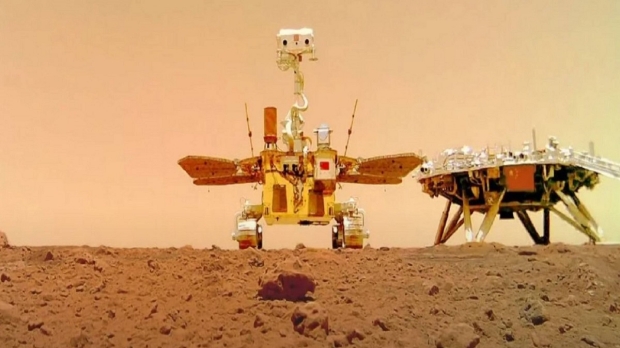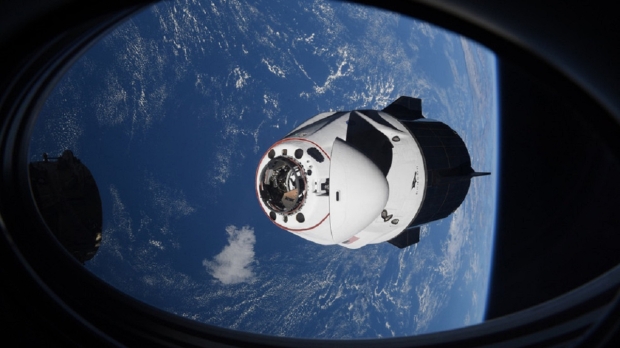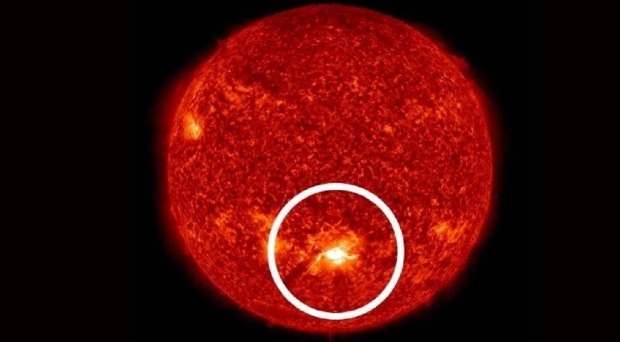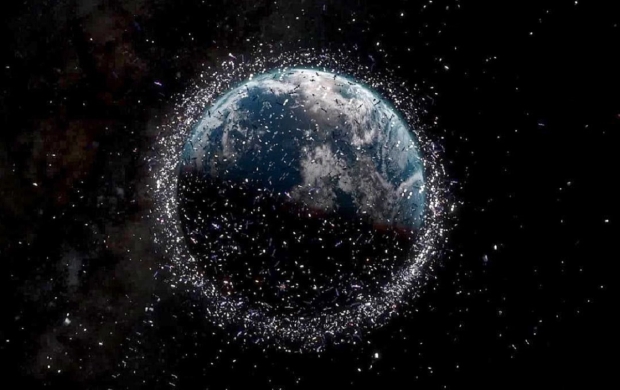Science, Space, Health & Robotics News - Page 253
Hubble Space Telescope enters safe mode, NASA is investigating why
Close to the end of last month, the Hubble Space Telescope experienced an error code that automatically puts all of its instruments into safe mode.
NASA first detected the error code when Hubble science instruments issued it at 1:46 a.m EDT on October 23. According to the space agency, the error code indicates "the loss of a specific synchronization message. This message provides timing information the instruments use to respond to data requests and commands correctly."
The following morning the instruments were reset, and science operations were resumed, but then on October 25, more error codes were issued that indicated "losses of synchronization messages. As a result, the science instruments autonomously entered safe mode states as programmed." NASA states on its blog that team members are currently evaluating data and system diagrams to discover the cause of the error codes and the apparent synchronization issue.
Continue reading: Hubble Space Telescope enters safe mode, NASA is investigating why (full post)
NASA astronauts cook space tacos with food from out-of-this-world
Astronauts aboard the ISS don't exactly have a large selection of gourmet meals, but sometimes the researchers get a very nice meal to enjoy.
The astronauts recently enjoyed some homemade space tacos that featured ingredients from the freshly harvested chile peppers that were a part of NASA's Planet Habitat-04 experiment that plans on inspecting the feasibility of growing food in space ahead of long-term missions to the Moon and eventually Mars. At the moment, there isn't much known about growing food in space beside the lower yields for reasons unknown, according to NASA.
"Studies of fruit development in microgravity are limited, and NASA researchers have noted lower fruit development versus ground observations in this experiment for reasons that are not fully understood at this point", stated NASA. While the yield from this particular crop was lower than what would be gained if it was grown back on Earth, the astronauts were still able to enjoy a selection of tacos that included "fajita beef, rehydrated tomatoes & artichokes, and HATCH CHILE!", according to astronaut Megan McArthur.
Continue reading: NASA astronauts cook space tacos with food from out-of-this-world (full post)
NASA delays SpaceX's fourth crew launch to ISS over 'medical issue'
The launch of SpaceX's fourth crewed mission to the International Space Station has been delayed yet again, this time over a "medical issue".
The launch was initially planned to take place on Halloween but was delayed due to bad weather and rescheduled for Wednesday, November 3. However, another delay has hit SpaceX's Crew-3 mission as one of the crew members is experiencing a "minor medical issue". NASA's blog post states that this minor medical issue is not an emergency or related to COVID-19.
In its blog post, NASA goes on to state that both the Falcon 9 rocket and SpaceX Crew Dragon spacecraft are in "good shape" and will remain at Launch Complex 39A at Kennedy Space Center. Additionally, teams will continue to monitor the crew's health, which includes NASA astronauts Raja Chari, the mission commander; Tom Marshburn, pilot; and Kayla Barron, mission specialist; and ESA (European Space Agency) astronaut and mission specialist Matthias Maurer.
Continue reading: NASA delays SpaceX's fourth crew launch to ISS over 'medical issue' (full post)
ISS astronauts create a new life form in outer space for first time
Astronauts aboard the International Space Station have introduced a new life form to outer space for the very first time.
NASA astronauts introduced a new life form into outer space on Friday as the first chile peppers grown onboard the International Space Station were harvested. The Hatch chile pepper seeds were brought to the ISS aboard SpaceX's resupply mission that occurred back in June. After retrieving the seeds from the cargo, NASA astronaut Shane Kimbrough planted them in an Advanced Plant Habitat, a growth chamber that features more than 180 sensors and LED lights controlled by a crew back at the Kennedy Space Station.
After several months the peppers were ready to harvest, marking the station's first crop of chile peppers ever grown in space. The growth of the chile peppers was a part of the Plant Habitat-04 investigation, which consisted of evaluating the feasibility of conducting a 120-day plant growth within the habitat and demonstrating the Advanced Plant Habitat's environmental control systems, LED lighting systems, and sensor-controller water delivery system.
Continue reading: ISS astronauts create a new life form in outer space for first time (full post)
NASA's return to the Moon will be captured by National Geographic
NASA won't be returning to the Moon alone as it has announced it will be bringing along National Geographic to capture the moment for everyone back on Earth.
In a new blog post on the NASA website, the space agency announced it has entered in a non-reimbursable (no-exchange-of-funds) Space Act Agreement to collaborate with National Geographic on "audiovisual hardware to fly inside Orion and related support for the project." The news was announced by Kathy Lueders, associate administrator for the Space Operations Mission Directorate at NASA Headquarters in Washington, who said, "Returning humans to the Moon with Artemis II will inspire the next generation of explorers."
Adding, "This time, we are bringing partners and technologies that will create additional opportunities for the world to share in the experience along with our astronauts." The decision to go with National Geographic came after a competition was held where NASA took proposals from companies for a unique public engagement campaign that could be created for Artemis II, the first Artemis flight that will carry astronauts around the Moon and back to Earth. (Artemis III, scheduled for 2024, will be the first crewed lunar landing since Apollo 17 in 1972).
Continue reading: NASA's return to the Moon will be captured by National Geographic (full post)
China's Mars rover needs help to get new data back to Earth
Since May 14, China's Zhurong rover has been exploring the Utopia Planitia, its landing location. Now it needs some help getting its collected data back to Earth for researchers to interpret.
China's Zhurong has been slowly gathering vital information about its surroundings and can't get the recorded data back to Earth on its own as it doesn't have the equipment to transmit data directly back to Earth. The reason for this is because the instruments would take up too much space on the rover, which is used for other space experiments. Instead of transmitting the data itself, Zhurong relies on the service provided by orbiters such as the European Space Agency's Mars Express.
The rovers are equipped with radios to transmit the data to an orbiter that then relays the message to Earth. Between the space agencies, it's reported that it's "common practice" to share orbiter information in order to get vital research information back to Earth efficiently. Beginning in November, ESA's Mars Express will undergo five listen and relay attempts that will include the orbit listening and recording any signals it "hears" when it passes directly over the Zhurong rover, which will be transmitting its signal "out loud".
Continue reading: China's Mars rover needs help to get new data back to Earth (full post)
NASA releases the first 3D view of Jupiter's turbulent atmosphere
In a new blog post, NASA has detailed the results yielded from the Juno spacecraft's observations of the solar system's largest planet.
In the post, the space agency states that its Juno probe that is currently orbiting the planet Jupiter has provided insight into the inner workings of the gas giant's atmosphere. From the observations, researchers were able to derive the first 3D map of Jupiter's atmosphere, the results have been published throughout several papers in the two recent issues of the Journal of Geophysical Research: Planets and Geophysical Research Letters.
Scott Bolton, the principal investigator of Juno from the Southwest Research Institute in San Antonio and lead author of the Journal Science paper that explores the depth of Jupiter's vortices, said, "Previously, Juno surprised us with hints that phenomena in Jupiter's atmosphere went deeper than expected. Now, we're starting to put all these individual pieces together and getting our first real understanding of how Jupiter's beautiful and violent atmosphere works - in 3D."
Continue reading: NASA releases the first 3D view of Jupiter's turbulent atmosphere (full post)
NASA asked SpaceX Endeavor crew not to use the toilet on the way home
Following a leak incident with the all-civilian Inspiration4 crew that recently launched with SpaceX, NASA has asked astronauts returning back from the ISS not to use the toilet.
NASA's Commercial Crew program manager, Steve Stitch, said on Friday that following a detected leak during the Inspiration4 mission that included just civilians, that NASA astronauts Shane Kimbrough and Meghan McArthur, Akihiko Hoshide of Japan's JAXA, and Thomas Pesquet of the ESA to explore "other means" of disposing of their bodily fluids. Technicians detected the leak by discovering one of the glued joints in the waste tank broke, which resulted in urine from the tank leaking into the fan.
Stitch said, "We have other means to allow the crew to perform the functions they need to do... Anytime the crew is suited they use an undergarment in that suit, and it's a short mission coming home." Adding, "Our intent is to not use the system at all for the return leg home because of what we've seen with the fluids we are talking about." The NASA crew that is heading back to Earth from the ISS was scheduled to launch from the floating laboratory on Halloween, but the launch was delayed due to bad weather until November 3 at 1:30 am ET.
Continue reading: NASA asked SpaceX Endeavor crew not to use the toilet on the way home (full post)
Massive Sun solar flare hits Earth, causes crazy phenomenon in the sky
NASA recently confirmed that on October 28, the solar flare was observed on the Sun's lower center and that this flare would result in a large amount of radiation smashing into Earth.
The flare was officially classified as an X-1 flare, with X being the most intense classification given to a flare. Officials predicted that the solar wind produced by the flare would impact Earth on October 30, and while their timing was correct, the intensity wasn't. The coronal mass ejection (CME) from the flare arrived with much less intensity than anticipated, with the majority of the flare actually missing Earth.
While the impact of a CME can cause geomagnetic storms that interfere with satellite, GPS communications, and other signals, they also can cause auroras to appear in the sky. Auroras are the result of the interaction between charged particles from the Sun's solar wind hitting particles in Earth's upper atmosphere. The interaction causes a glow that is visible in the sky. Skywatchers in certain locations around the world were able to spot the gorgeous phenomenon occur in the night sky.
Continue reading: Massive Sun solar flare hits Earth, causes crazy phenomenon in the sky (full post)
Magnets may be the solution to the ever-growing problem of space junk
The space located around Earth is exponentially filling up with junk from rocket parts and broken satellites, and if the issue isn't solved, the polluted space may result in a hindrance to humanity's space exploration.
In 1979 NASA scientist Donald J. Kessler proposed what was dubbed the "Kessler syndrome", which is a scenario that could unfold when the number of objects within low Earth orbit becomes so dense that the likelihood that it increases the the the point where it's more likely further collisions will occur, causing a cascade effect of debris collisions throughout low Earth orbit. Researchers are proposing new ideas to clean up low Earth orbit to prevent this tragic domino effect from happening. One suggestion may be to use magnets that can manipulate the debris.
A new study published in the journal Nature by researchers at the University of Utah details the use of spinning magnets equipped by robots. These robots would be able to push space debris down into Earth's atmosphere, where they would then burn up upon re-entry, removing the need for the robot to collect them physically. The team of researchers was able to demonstrate with the technology that they were able to manipulate debris in six degrees of movement, including rotation.
Continue reading: Magnets may be the solution to the ever-growing problem of space junk (full post)


